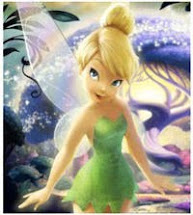 An Explanation From the Author:
An Explanation From the Author: In my
first draft of
Dead Mann Walking, a group of peacefully protesting chakz, pushed too far by the living, go feral
, fulfill
ing the zombie stereotype. As chak-detective Hessius Mann helplessly watches the mess, he broods on the fictional history of the walking dead.
Upon reading this, Ace editor, Jessica Wade, felt it pulled the reader out of the story-world. I agreed, lopping it out quicker than Ash with a chainsaw-hand.
However, to celebrate
Dead Mann’s Oct 4 release, what could be more appropriate than restoring it to half-life? So here ‘tis, a quick, quirky look at Z’s from the POV of a PI who should know.
Dead Mann Talking: A History of Zombies

Crowded, surrounded, attacked, the chakz gave the people what they wanted, proof that they were dangerous. It was as though that
group-mind the LBs worried about had actually kicked in. Maybe the ferals just never had the numbers before, or maybe you had to be far enough back to see the patterns. I saw them now.
Flashes of chak-bodies moved in elegant waves, like flocks of migrating birds. The livebloods, for all their higher functions, fled without grace. The big picture pulsed and throbbed. But the personal tragedies played out in tiny spaces, as if the two had nothing to do with one another. In the center of the swirls stood the fair-haired cop I’d seen from the window, bullets spitting from his AK-47. They tore some dead flesh. Mostly, he was hitting livebloods before the ferals took him down.
So was this Ezekiel and his dry-bones rising in the valley of death? Was it then, or later, now, or the future? The edges were arbitrary, the beginnings and endings likewise. But as I watched, this was the shit I remembered.
In 1929 W.B. Seabrook wrote about voodoo cults and resurrected slaves in a novel called
The Magic Island. It made sense that Haiti, whose population had recently thrown off their shackles, would have plantation slaves for their monsters.

In 1932, Victor Halperin’s
White Zombie took it to the white Europeans. The island lust of Murder Legendre, played by Bela Lugosi, put a white virgin’s virtue at risk.
But these were early, proto-forms. There was no blood yet, not like there was on the Fort Hammer plaza. My eyes singled out a male teen, all buff and dressed to shock with Mohawk, tattoos and piercings. He ran half-heartedly, grabbing at the side of his head where his ear had been once. Red liquid dripped between his fingers. Eventually, he slowed and then, simply stopped.

In 1943 Jacques Tournier’s
I Walked With a Zombie gave us a dead-eyed scarecrow. It was more a symbol. No savagery, just foreboding. It was Richard Matheson’s
I Am Legend in 1954 that took it up a notch. The book was sort of about vampires, but they were so much like zombies that the 1964 Italian film version with Vincent Price,
The Last Man on Earth, became the prime inspiration for George Romero’s
Night of the Living Dead.

1968, the zombie had arrived. Romero was the first, really, if you don’t count Ezekiel and all the others. What took so long? Well, in those days, the dead moved slowly.
On the plaza, groups formed and collapsed like cauldron bubbles. I watched two families band together. The mothers carried the little ones, forcing the older children ahead. Weirdly, the fathers carried doors, using them as shields. Two danglers and a gleet banged at them. They even tried the knob.
Romero made it biblical again. Cannibal corpses, old friends and lovers among them, children chewing on parents. The condition spreading like plague, and no one knew why or who to shoot. His sequel,
Dawn of the Dead, used the same idea, but more directly as social critique, played out in comic-book colors so gaudy you
had to get the joke.
I hoped the family made it. Something should survive, and it didn’t look good for anyone else. The elegant swarms had surrounded the LBs, and as they squeezed in, began to lose their pretty shape. Together now, ferals and livebloods pushed and pulled en mass, so many, so close together, they could barely move. Limbs tangled, the center of the blob tumbled, all together, all at once, like football teams in a joint tackle.

After Romero, what could you say? A horde of lesser efforts followed, Fulci’s
Zombi 2 notable for an underwater battle between zombie and shark. Then decades passed.
28 Days Later brought some class back to the movies. That was more about plague than the dead, but close enough, and its monsters were fast.
The Dawn of the Dead remake followed suit. The books and comics got better –
Monster Island by David Wellington,
The Walking Dead by Robert Kirkman, Tony Moore and later Charlie Adlard
(now on TV!). By then people played video games like
Rebel Without A Pulse and
Left4Dead, shooting and being shot, eating and being eaten. The great democracy of mass media.
The mob in the plaza had formed a single creature, like one of Colby Green’s orgies, many limbs, many

mouths, some screaming, some chewing. Stray Livebloods and ferals tried to pull the bodies free, but for different reasons.

The cop with the flamethrower stood at the edge of the mass and stared, unsure what to do. He tried to help, used his free hand to grab a hand and yank, but when a feral came free, a chunk of dripping meat in its mouth, he’d had enough. He let loose with the thrower, turning it on the writhing pile. Before the cop could barbecue the lot, a liveblood clonked him with a crowbar, then dived into the smoldering mess, screaming that he had to find his girlfriend.
I’d like to say all the books and movies fade against the reality, but maybe it’s the reality that fades. After all, who could forget the surprise hit, Pride and Prejudice and Zombies? This is the shit that gives us shape, that let’s us understand the world, even build it from scratch. Shakespeare told us. We are such stuff as nightmares are made on, and our little life is rounded with a scream.
I’d like to say all the books and movies fade against the reality, but maybe it’s the reality that fades. After all, who could forget the surprise hit, Pride and Prejudice and Zombies? This is the shit that gives us shape, that let’s us understand the world, even build it from scratch. Shakespeare told us. We are such stuff as nightmares are made on, and our little life is rounded with a scream.
The plaza had reached critical mass. The blob broke and scattered. Bodies, some moving, spilled across the street, then onto the long black hospital entrance ramp that had kept the scene arms distant. The tide was coming in.
# # #


































































